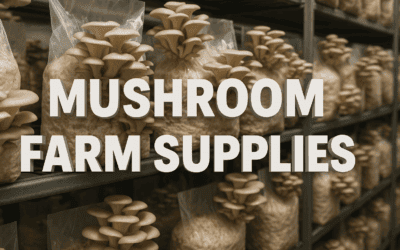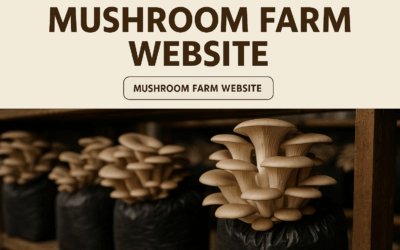MULTIPLYING SPAWN ON SORGHUM SEEDS
- Prepare materials:
- Sorghum seeds
- Bottles (flask type)
- Cotton (gauze)
- Paper squares 7 cm x 7 cm
- Rubber bands
- Alcohol lamp
- Alcohol bottle
Note: Various types of grains can be used: Sorghum, millet, wheat
Grains must:
- Have been recently harvested
- Contain few broken kernels
- Little contamination
- No fungi, no insects
- No more than 12% humidity
- Soak sorghum for one night; 2 liters of water per 1 kg of grain.
- Wash and strain sorghum seeds to remove all water.
- Steam sorghum seeds for 30-45 minutes to soften grains and cook about 25%.
- Drain water and spread sorghum seeds to cool down and decrease moisture.
- Fill ¾ of bottle with sorghum seeds.
- Carefully prepare cotton plug
- Tightly plug mouth of bottle with cotton and leave out for ventilation.
- Transfer all prepared bottles to the sterilization chamber.
Close chamber. Fire-up burner or stove to heat chamber. Make sure to release all air from the chamber before starting. Keep pressure in the chamber at 15 lb./sq.inch. or 121o Celsius for 30 minutes for small chambers and 45 minutes for medium chambers.
Let bottles cool down.
- Transfer bottles to a clean and cool place.
- Bottles must be cleaned and well prepared.
Prepare the well verified PDA bottles
- Clean laminar flow chamber using alcohol.
- Transfer PDA, sorghum seed bottles, paper and rubber bands in laminar flow chamber. Light UV lamp for 10 – 15 minutes before starting. Place needle in alcohol.
Turn off UV. Clean both hands with alcohol and insert hands into the chamber.
- Using 2 fingers, take out needle, pass through fire as to burn alcohol, and disinfect needle. Make sure the needle turns red.
- After the needle cooled down to normal state, use needle to cut small square (5mm x 5mm) of PDA with mycelium (white color).
- Close bottle immediately. Remain near flame at all times.
- Using other hand flame around the mouth and shoulder of the sorghum seed bottle.
Using other fingers, open spawn bottle near flame to avoid contamination.
- Insert needle and inoculate sorghum seeds with PDA mycelium by placing small square piece in the middle of the bottle. Make sure the PDA mycelium does not touch anything before entering the sorghum seeds bottle.
Note: The mouth of the bottle should be near the flame. The mouth should remain higher than the bottom part at all times. Do not touch mouth of bottle with piece of PDA.
- Close bottle immediately.
- Place square paper over cotton and tie with plastic neck or rubber band.
- Label inoculated sorghum bottles writing: Date, Spawn no., ref., and inoculation time.
Note: It takes about 10 – 15 days to get full-grown sorghum grain mycelium, depending on the species.
- Keep mature sorghum seeds in a cool place or in the vegetable compartment of the refrigerator. Check for infection regularly.
- Remove contaminated bottles.
Transfer contaminated bottles to cleaning site. Clean bottles as normal glassware.
- Observe and collect data. Take notes to draw conclusions.
Note: A loss of about 3% is to be expected.
Mushroom Farm Supplies
The Best Mushroom Farm Supplies for Successful Growth Key Highlights Starting your mushroom farm requires the right mushroom farm supplies for success. High-quality substrates and grains are the foundation of healthy mushroom cultivation. Choosing cost-effective,...
Leveraging Chat Message Tools for Your Mushroom Farm Business: A Complete Guide
Leveraging Chat Message Tools. In the evolving landscape of digital marketing, chat message tools and chatbots have emerged as one of the most powerful yet often overlooked marketing channels available to mushroom farmers. With over 80% open rates—the highest...
Effective Email Marketing for Your Mushroom Farm Business: A Complete Guide
Effective Email marketing remains one of the most powerful yet underutilized marketing tools available to mushroom farmers. When done correctly, email marketing can generate up to $40 in return for every dollar spent, making it one of the highest ROI marketing...
How to Use Video Shorts to Grow Your Mushroom Farming Business Online
In today's fast-paced digital world, mushroom farmers need to think beyond traditional marketing methods to reach their ideal customers. Video shorts are a great low cost option. While farmers markets and word-of-mouth referrals remain important, the power of social...
Getting the Most Out of Your Business or Farm Website A Complete Guide for Mushroom Farmers
Your website isn't just a digital business card anymore—it's your most powerful marketing tool, primary sales platform, and often the first impression potential customers have of your farm. This comprehensive guide will show you how to transform your website from a...
The Complete Guide to Unicorn Grow Bags: Why Professional Mushroom Farmers Choose American-Made Quality
For an in-depth discussion about Unicorn Grow Bags, check out our latest Mushroom Farming Podcast episode where host Monica sits down with online marketing expert Harry Warrick to explore everything you need to know about selecting and using these industry-standard...
Mushroom Farm Websites
Why Your Mushroom Farm Needs a Website The Complete Guide to Digital Marketing SuccessListen to our new mushroom farming podcast about mushroom farm websites. In today's digital marketplace, having a strong online presence isn't just an advantage for mushroom...
Mushroom Farming Podcast Ep 3 YouTube Channel
Why Every Mushroom Farm Needs a YouTube Channel: The Second-Most Powerful Search Engine You're Ignoring Based on Episode 3 of The Mushroom Farming Podcast Every Mushroom Farm needs a YouTube Channel. Your mushroom farm has a Google Business Profile. You've optimized...
Mushroom Farming Podcast Episode 2
Why Your Mushroom Farm Needs a Google Business Profile: The Key to Map Pack Domination Based on Episode 2 of The Mushroom Farming Podcast If you're growing gourmet mushrooms and wondering why some farms seem to get all the local customers while you're struggling to be...








